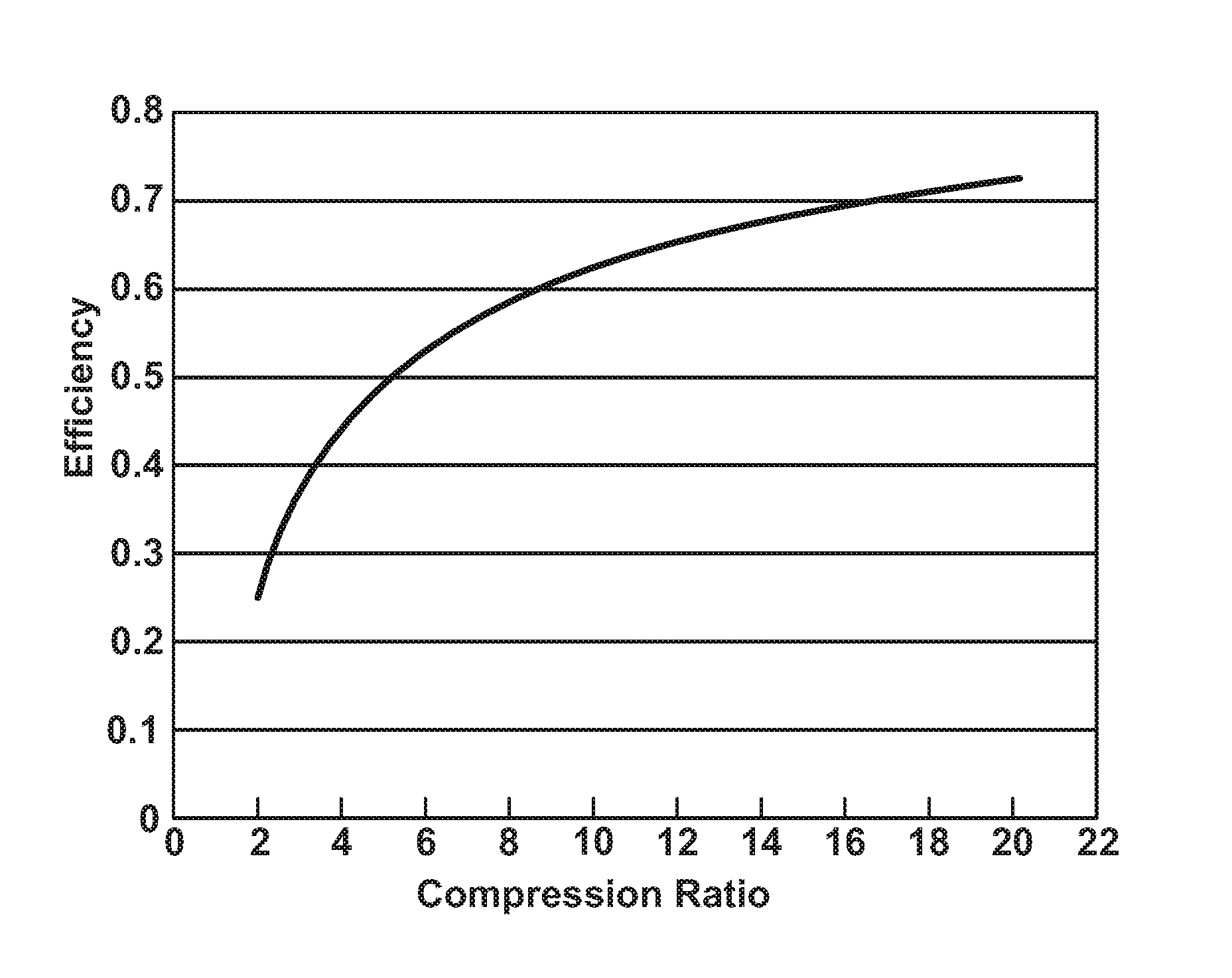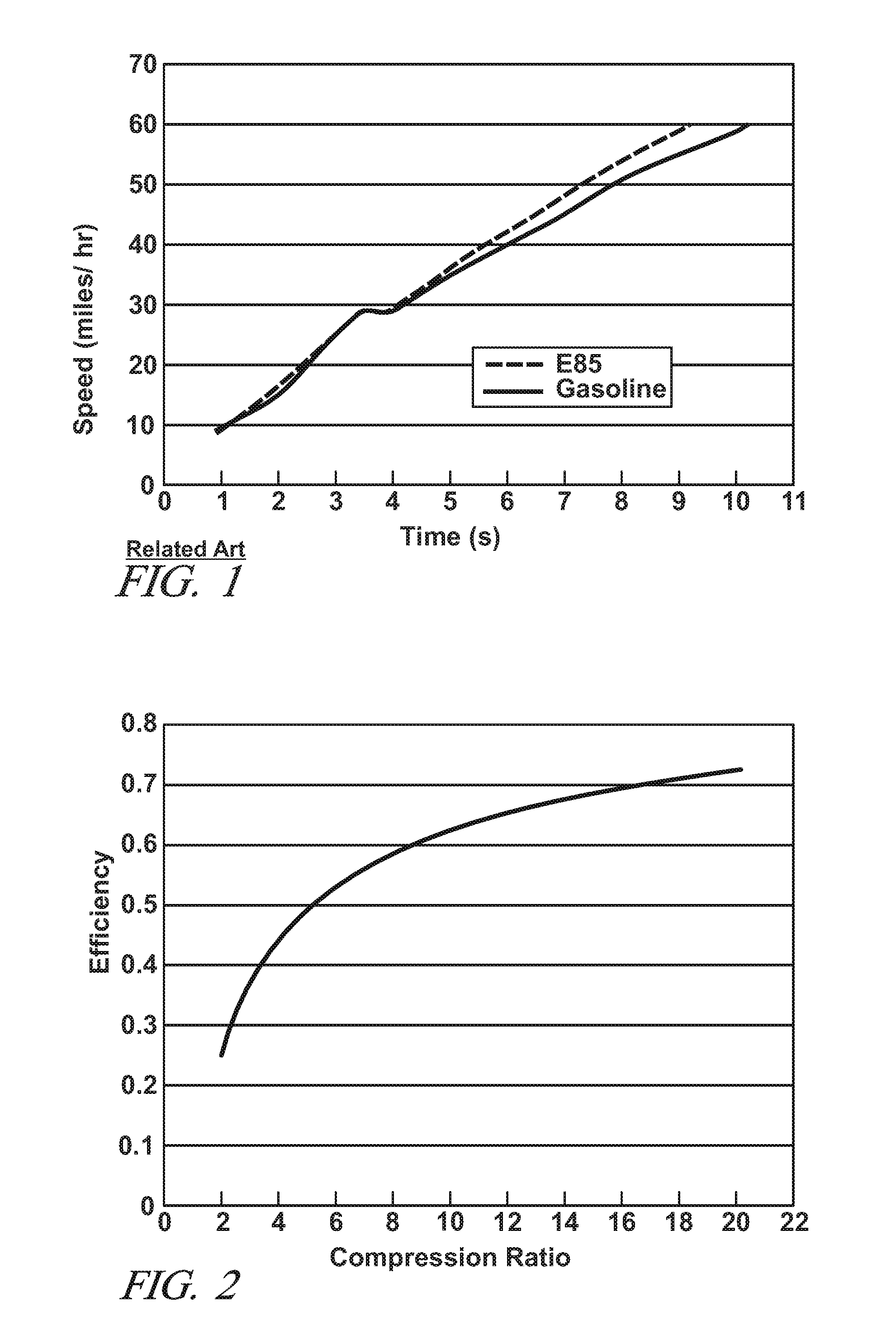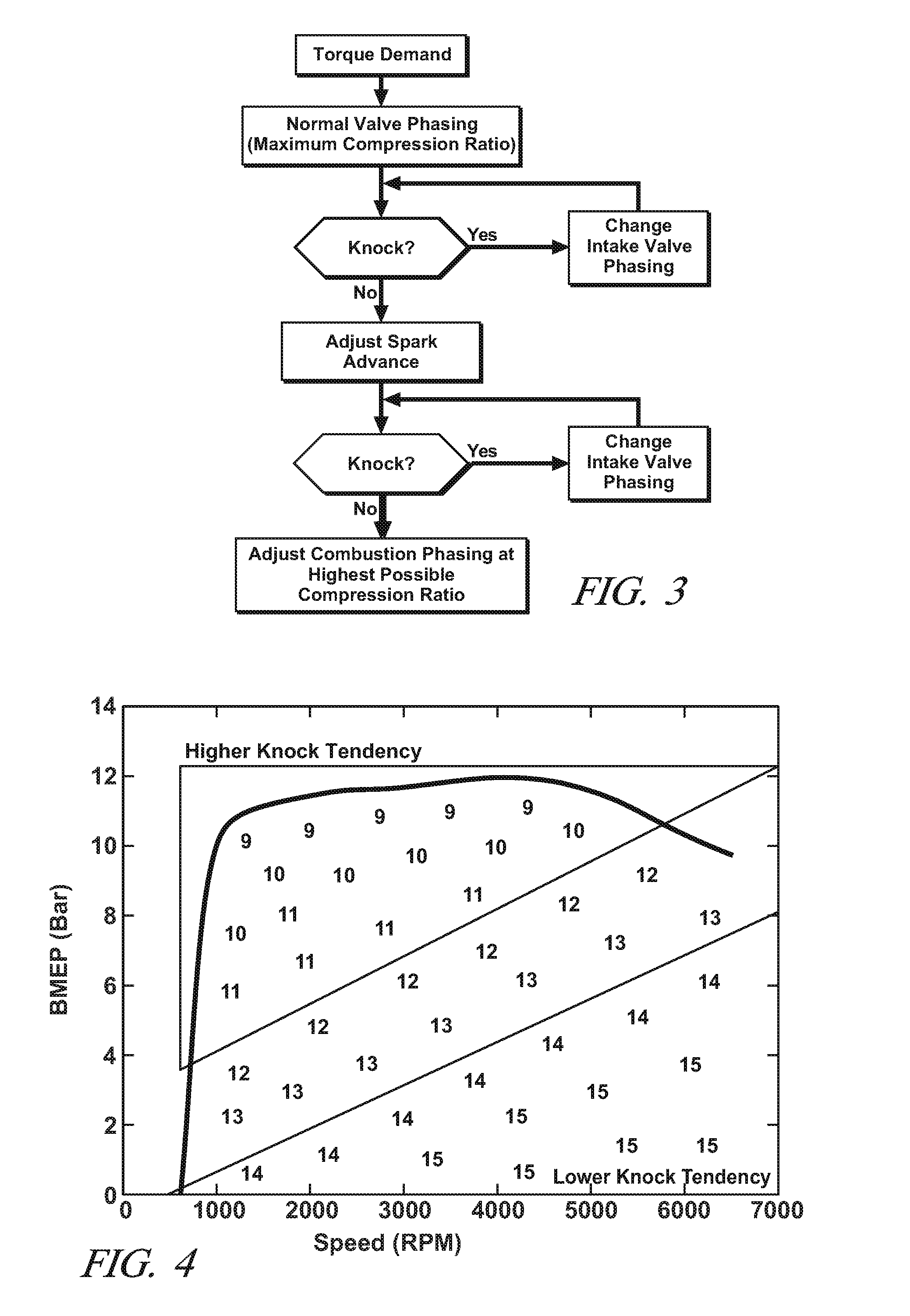Active compression ratio modulation through intake valve phasing and knock sensor feedback
a technology of active compression ratio and sensor feedback, which is applied in the direction of electrical control, process and machine control, instruments, etc., can solve the problems of limited engine versatility, poor fuel consumption performance of camshaft grinds optimal for high power output, and inability to deliver the maximum torque output for a given engine configuration, so as to reduce the effective compression ratio
- Summary
- Abstract
- Description
- Claims
- Application Information
AI Technical Summary
Benefits of technology
Problems solved by technology
Method used
Image
Examples
Embodiment Construction
[0013]Referring now to the drawings, wherein the showings are for the purpose of illustrating certain exemplary embodiments only and not for the purpose of limiting the same, FIG. 1 shows differences in performance from 0 to 60 m.p.h. of a vehicle equipped with a Saab 9.5 BioPower engine, as detailed in SAE publication 2007-01-3994. From this it is evident that the fuel designated as “E85” has the capability of providing performance increases relative to the same engine / vehicle configuration when operated using standard gasoline fuels. The knock resistance of E85 is higher than gasoline, which enables engines that are specifically designed to operate on E85 to be provided with higher dynamic compression ratios, or higher levels of boost on engines equipped with provisions enabling forced-induction, including supercharged engines and turbocharged engines. As shown in FIG. 2, typical of an engine operated under conditions in which the excess air ratio is about 1.4, higher dynamic comp...
PUM
 Login to View More
Login to View More Abstract
Description
Claims
Application Information
 Login to View More
Login to View More - R&D
- Intellectual Property
- Life Sciences
- Materials
- Tech Scout
- Unparalleled Data Quality
- Higher Quality Content
- 60% Fewer Hallucinations
Browse by: Latest US Patents, China's latest patents, Technical Efficacy Thesaurus, Application Domain, Technology Topic, Popular Technical Reports.
© 2025 PatSnap. All rights reserved.Legal|Privacy policy|Modern Slavery Act Transparency Statement|Sitemap|About US| Contact US: help@patsnap.com



